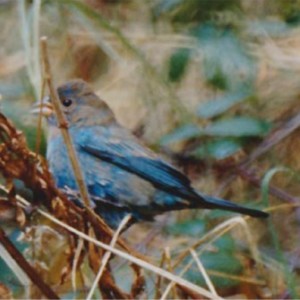Changes to the British List (21 Dec 2018)
Taxonomy
Correction to the British List
Following the update of the 9th Edition of the British List to comply with the revised version 8.2 of the IOC World Bird List (IBIS 160: 936-942) it was noted that one change was overlooked.
A change in taxonomy of the Family Locustellidae resulted in some species of the genus Locustella being moved to the genus Helopsaltes. In the context the British List this results in Pallas’s Grasshopper Warbler changing from:
Locustella certhiola to Helopsaltes certhiola.
Furthermore, the taxonomic order of Locustellidae is revised.
The corrected version of the British List is now available here (simple list and Excel spreadsheet versions).
Category E
 Indigo Bunting
Indigo Bunting
Passerina cyanea
Wells Wood, Norfolk, October 1988
© Robin Chittenden / robinchittenden.co.uk
After a review, the British Ornithologists’ Union Records Committee (BOURC) has placed the following record in Category E:
Indigo Bunting Passerina cyanea
Adult, non-breeding plumage, Wells Woods, Norfolk, 21-30 October 1988 (photographed).
The species is in Category A based on a subsequent record of a first-calendar-year male, on Ramsey Island, Pembrokeshire (Sir Benfro) in 1996. One other record has been accepted to Category A, with others placed in Category E. However, this Norfolk record, along with three others, was placed in Category D (IBIS 141: 175-180).
Though the Norfolk bird was found in mid-October, a period when others of the species have been observed in the Western Palearctic, having crossed the Atlantic from North America, other features about the record were concerning. The bird was an adult in unusual feather moult for October; and all other Western Palearctic records of this passerine have been aged as first–calendar-year. Furthermore, a series of European records the following spring remains unparalleled and may have involved birds which arrived through the captive bird trade, which was known to be occurring in this species at the time. These considerations resulted in the Committee placing this record in Category E.
Indigo Bunting breeds across eastern and central North America, with winter movements of birds south to southern North America, Central America and northern South America.
The above items will be published as part of the BOURC’s 50th report due to be published in IBIS in October 2019. Upon publication of the above, the British List remains at 618 species (Category A = 600; Category B = 8; Category C = 10).
View the British List, sponsored by Leica


